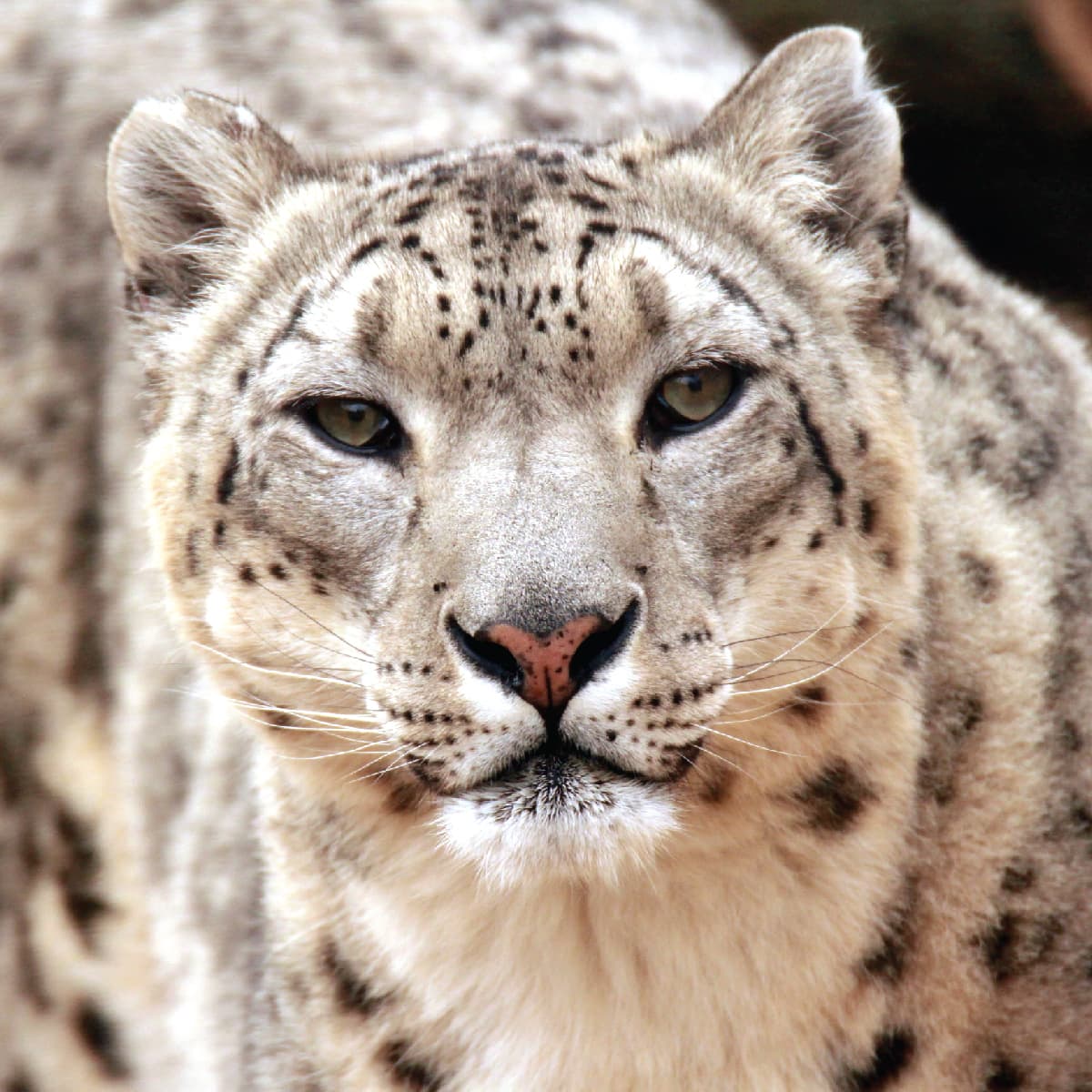
Snow Leopard
Uncia uncia
Did you know?
- Snow leopards are part of the Felidae family, which they share with other big cats.
- Due to their secretive nature, they have been called mountain spirits and “ghost cats.”
- They live in a variety of high habitats in Central Asia.
- Snow leopards are usually solitary animals.
- After a pregnancy of 100 days, a female usually has two to three cubs.
Adaptations
Snow leopards are well-adapted to high-elevated, cold climates. They have an extra-large nasal cavity, which warms the air they breathe. Their large paws have fur-covered foot pads that act like built-in "snowshoes." Their long body hair has an underlayer of dense fur that can be up to five inches thick. This plush, warm gray, white and black coat is colored to blend in with the snowy, rocky surroundings. They have a well-developed chest, short forelimbs, and a three-foot-long tail that helps them keep their balance. They are able to leap 50 feet horizontally and jump 20 feet vertically.
Mother and Cub
Snow leopards are solitary animals with the exception of females caring for offspring or males pairing up with females for mating season. They mate from January to March. A female gives birth in spring or early summer after a pregnancy of about 100 days. The kittens are born in a rocky shelter, which the mother lines with her fur for warmth. The litter can include as many as five babies, but the average is two or three. Cubs are very active by three months, but they may stay with their mom for one-and-a-half to almost two years.
Threat Level
- Unknown
- Common
- Near Threatened
- Threatened
- Endangered
- Critically Endangered
- Extinct in the Wild
Endangered
The Snow Leopard faces a very high risk of extinction in the wild.
Range
Central Asia
Habitat
Mountain grasslands, scrub, and open forest

We care about snow leopards
Wild snow leopards are in serious trouble. It has been estimated that there are only 4,500 to 7,500 left in the wild.
The
Zoo supports two snow leopards in Big Cat Country. The Saint Louis Zoo
also participates in the Species Survival Plan for snow leopards. This
is a cooperative breeding program, with a number of zoos working
together to ensure the survival of the species. Learn more about how we are helping wildlife around the world.
Find this animal in Red Rocks

SAINT LOUIS ZOO ZONE
Red Rocks
At Red Rocks, you’ll view some of the world’s most powerful predators living near some of the world’s most graceful prey. Lions, tigers, zebra and giraffes all share the natural rocky boulders and outcroppings as their territory. With shading trees and a bird or two among the mammals, Red Rocks is a great place to spend a day at the Saint Louis Zoo.

